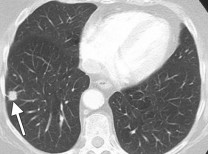
What is a Liquid Biopsy?
Circulating tumor cells (CTCs) were first discovered in 1869 by Thomas Ashworth in the blood of a man with metastatic cancer. He hypothesized that “cells identical with those of the cancer itself being seen in the blood may tend to throw some light upon the mode of origin of multiple tumors existing in the same person.” In other words, Mr. Ashworth discovered that as tumors grow, they can shed cells and other material that travel through the blood or lymph system and can form a new tumor in other tissues. It is then possible that these cells and other materials like tumor DNA, more commonly referred to as circulating tumor DNA (ctDNA), could be detected and used as a tool to find or monitor cancer in the body. In his very important work, Ashworth noted, “One thing is certain, that if they [CTC] came from an existing cancer structure, they must have passed through the greater part of the circulatory system.”1
This discovery has proven to be one of the most important findings in the understanding of cancer biology and metastasis. It wasn’t until the 1990’s that the significance of circulating tumor cells in the diagnosis and monitoring of the disease was fully realized. Over 100 years later, CTCs, ctDNA, or liquid biopsy as they are called collectively, have become an important area of research and an invaluable tool in the diagnosis and management of cancer.
These simple blood tests are quickly emerging as tools physicians use in screening for the presence of disease, monitoring response to therapy, identifying the appropriate treatment, and detecting residual disease after surgery.
A powerful discovery in cancer diagnosis and management
Much like a tissue biopsy, liquid biopsies can help tell the story of what is happening inside one’s body. The power of a liquid biopsy is in its ability to help detect and monitor cancer anywhere in the body without needing a sample of the tumor or suspicious tissue. This non-invasive approach is both safer than a traditional biopsy and a more realistic means of monitoring the progression of disease compared to performing multiple invasive tissue biopsies over time.
One emerging application of CTCs in cancer management is the prediction of metastatic potential in prostate cancer. In other words, how likely the cancer is to spread to other areas of the body. At Halo Diagnostics, an advanced diagnostics company in the Coachella Valley, we use CTCs to monitor response to a very promising and emerging prostate cancer treatment option called laser focal therapy.
Unlike traditional approaches, like radical prostatectomy or radiation therapy, laser focal therapy is able to accurately target lesions or tumors in the prostate by using real-time magnetic resonance imaging and then laser energy to ablate or kill affected areas of the organ. This targeted approach is effective at not only treating the cancer but protecting vital surrounding tissues and nerves that are often damaged by traditional approaches. Damaging these neighboring structures can lead to side effects, like erectile dysfunction and urinary incontinence, often observed when a man undergoes radical whole gland surgery to treat his disease. Once the disease is treated by laser focal therapy or more traditional methods, the presence or absence of CTCs in the blood is a powerful way to monitor the success of the procedure and to help keep a close eye on possible recurrence.
Circulating tumor cells are not just for prostate cancer. The test can be helpful in the setting of non-small cell lung cancer, colorectal cancer, breast cancer, melanoma and ovarian cancer. The following is the perspective of a breast cancer survivor, Desert Health Publisher Lauren Del Sarto, who had liquid biopsy tests performed to monitor the presence of CTCs during her journey.
“I was intrigued to learn that the CTC test, often used as a cancer marker within the naturopathic community, was not regarded as a viable test by the medical oncology community,” she says. “The test was important to me, both physically and emotionally. With the guidance of my naturopathic doctor, my goal was to get the number down under five, and I did (number of viable tumor cells in the blood sample). The higher numbers inspired me to stick to my strict nutrition and supplementation protocol, and the lower numbers were affirmation that the treatment plan I selected was working. It was validation for me to know that my dedication to the protocol was paying off.”
Del Sarto’s CTC score was zero at diagnosis, 105 at seven months, 54 at nine months and back to zero at 19 months. She has been deemed cancer free by both her medical and naturopathic doctors.
Bernadette M. Greenwood is chief research officer at Halo Diagnostics and a clinical instructor at UC Riverside School of Medicine. For more information on liquid biopsy, visit www.halodx.com/liquidbiopsy.
Reference:
1) Ashworth, T. R (1869). “A case of cancer in which cells similar to those in the tumours were seen in the blood after death”. Australian Medical Journal. 14: 146–7










































Comments (0)